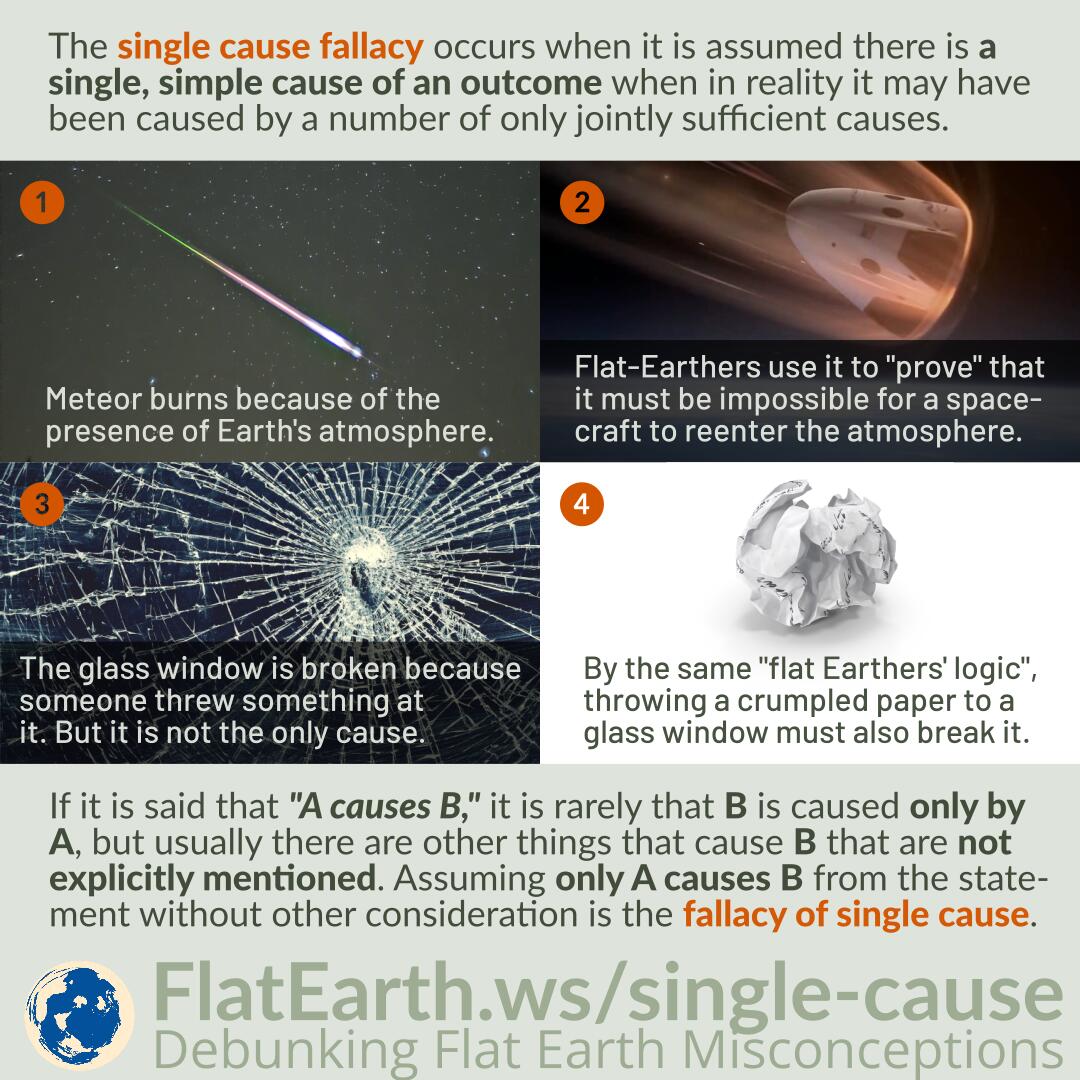The fallacy of the single cause occurs when it is assumed that there is a single, simple cause of an outcome when in reality, it may have been caused by a number of only jointly sufficient causes.
If it is said that “A causes B,” it is rarely that B is caused only by A, but usually, there are other things that cause B simultaneously with A that are not explicitly mentioned. Assuming that only A causes B from the statement without further consideration is the single-cause fallacy.
A common case we often see in flat Earth communities is about meteors and the reentry of spacecraft. It is said that meteor burns because of the presence of Earth’s atmosphere. Then flat-Earthers erroneously concluded that the presence of Earth’s atmosphere is the only thing that causes a meteor to burn. Therefore, they say, it must be impossible for a spacecraft to reenter Earth’s atmosphere. In reality, there are other factors involved, including the speed, the material compositions, the size, etc.
If we say a glass window is broken because someone threw something at it, it does not mean it is the only cause. Other factors also determine the outcome. For example, the type of object being thrown, its weight, speed, the thickness of the glass, etc. Using the same “logic” that these flat-Earthers use, we can “conclude” that throwing a crumpled paper to a glass window must also break it.
References
- Fallacy of the single cause – Wikipedia
- Causal reductionism – Logically Fallacious
- Oversimplified cause fallacy – Logically Fallacious


